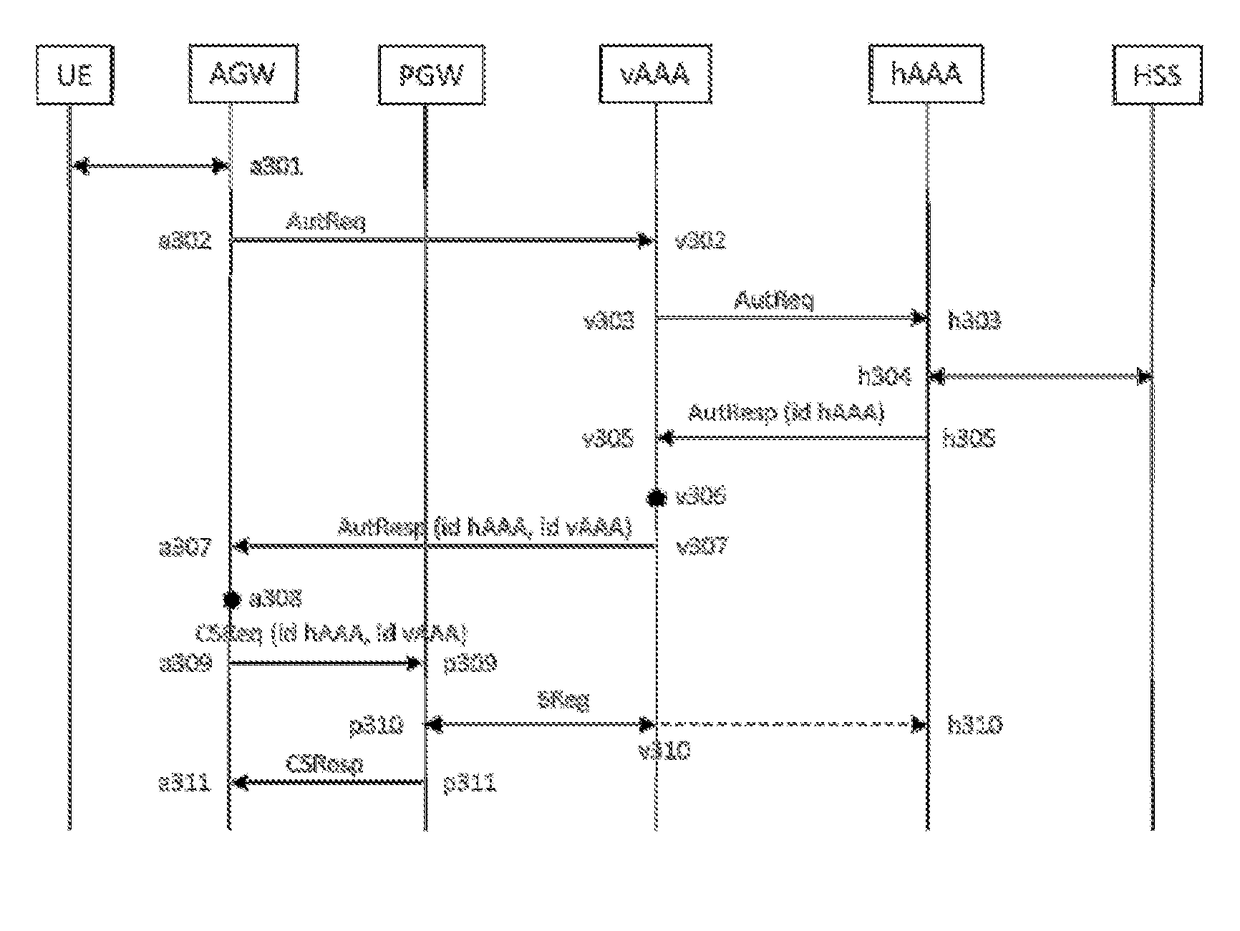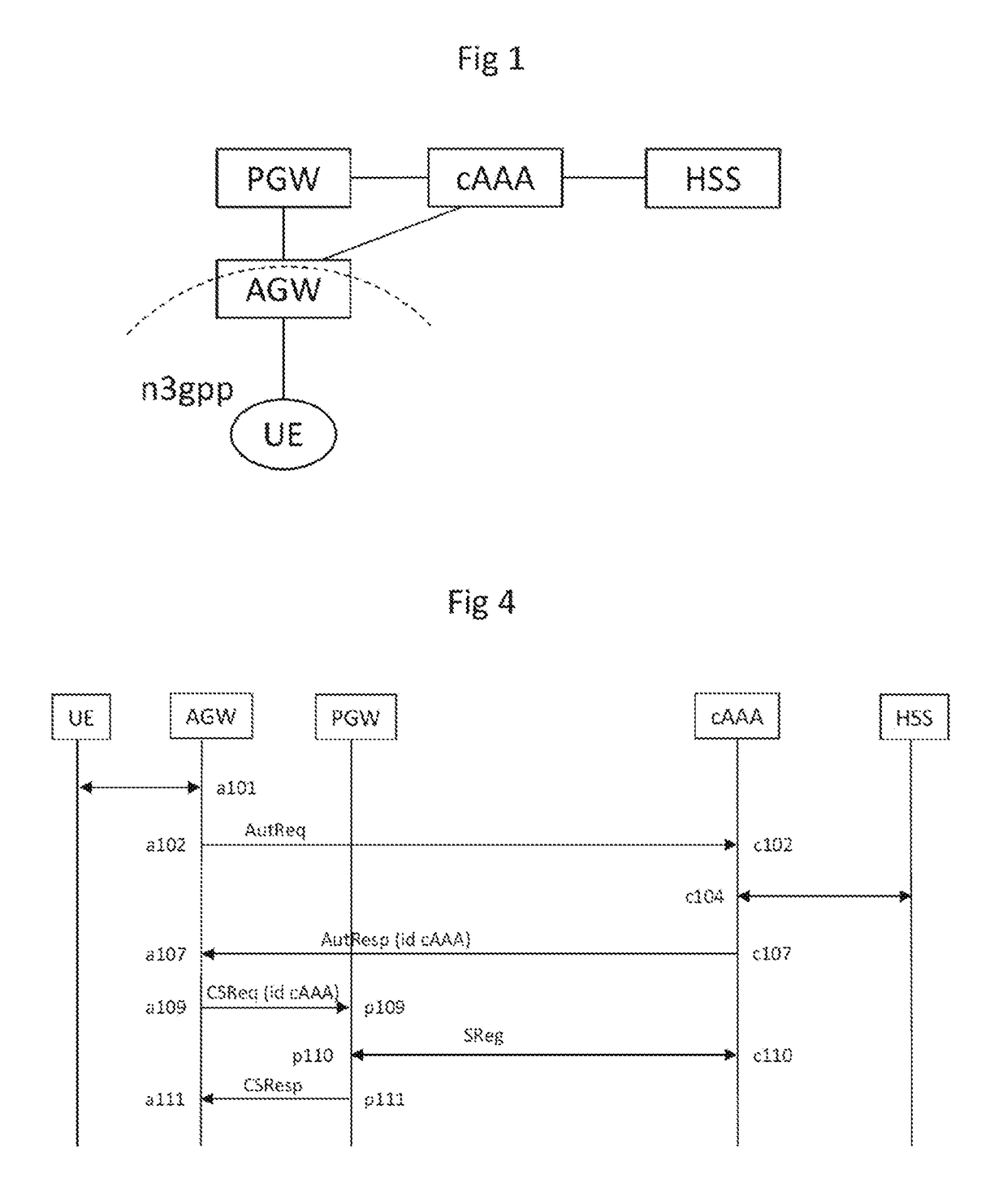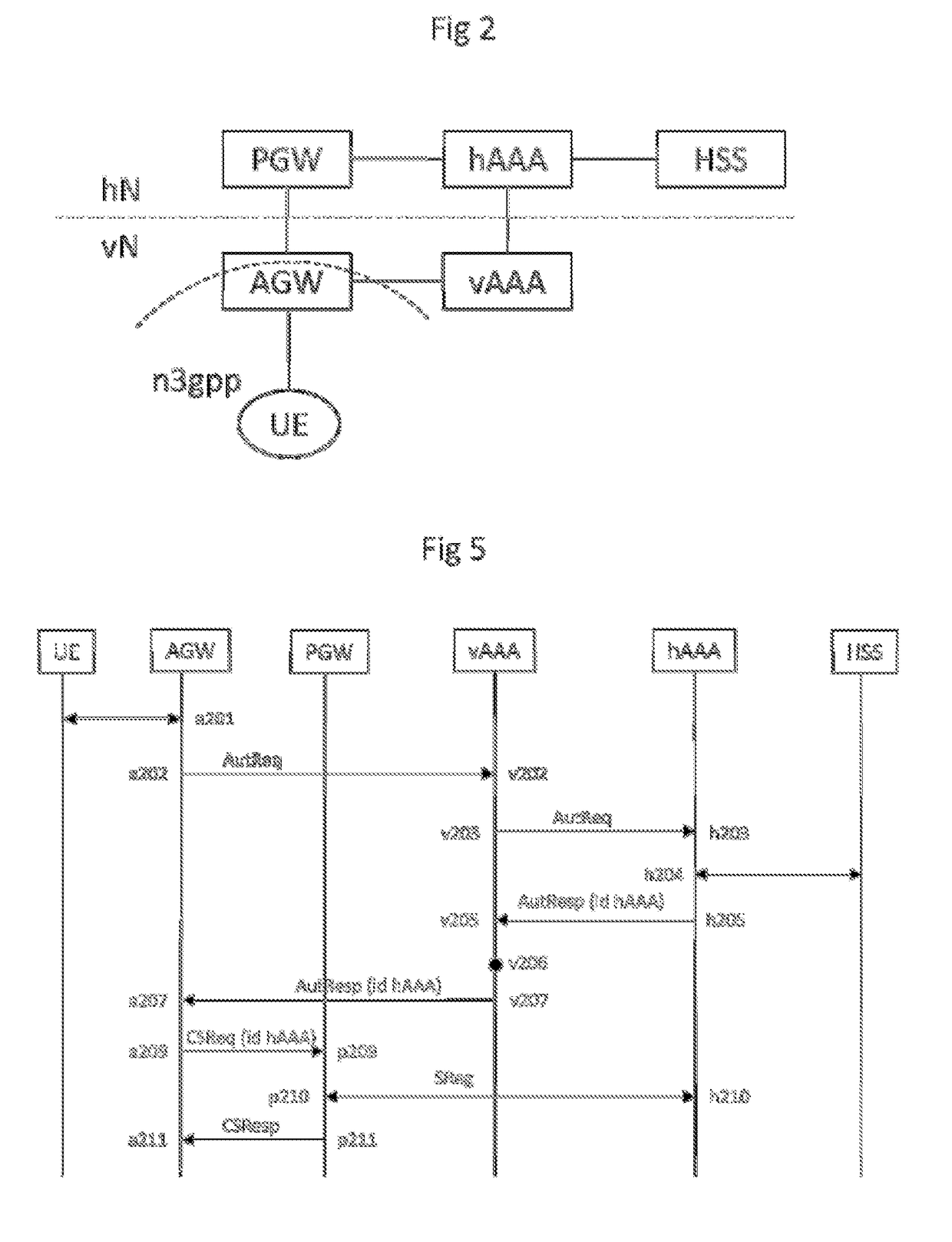Method and device for identifying visited and home authentication servers
- Summary
- Abstract
- Description
- Claims
- Application Information
AI Technical Summary
Benefits of technology
Problems solved by technology
Method used
Image
Examples
first embodiment
[0116]FIG. 1 presents in a schematic manner an overall view of the elements implementing the invention, according to a
[0117]In this first embodiment, the user terminal UE is not in a roaming situation. The terminal UE is able to connect to an access gateway AGW offering non-3GPP access (denoted n3gpp in the figures) to the packet network core of a 3GPP network, or “3GPP world”. The access gateway AGW is connected to one or more authentication servers of type AAA. In the case where there are several authentication servers, the server cAAA to be contacted for the terminal UE is either known in advance to the gateway AGW by configuration, or there exists a mechanism allowing dynamic discovery of the server cAAA as a function of the terminal UE and possibly as a function of the APN requested by the terminal.
[0118]After authentication and authorization of the terminal UE, the access gateway AGW can send a request to the anchor gateway PGW for the establishment of a connection for the ter...
second embodiment
[0119]FIG. 2 presents in a schematic manner an overall view of the elements implementing the invention, according to a
[0120]In this second embodiment, the user terminal UE is in a roaming situation and its anchor gateway PGW must be in the 3GPP home network, denoted hN.
[0121]The terminal UE is able to connect to an access gateway AGW offering non-3GPP access to the 3GPP world. The access gateway AGW is connected to one or more authentication servers of type AAA in charge of managing the requests for connection to the access gateways AGW situated in the visited 3GPP network, vN. In this mode, the authentication server vAAA to be contacted so as to authorize the connections of the terminals UE roaming in the visited network vN is either known in advance to the gateway AGW by configuration or discovered dynamically.
[0122]During authentication of the roaming terminal UE, the authentication server vAAA invoked by the access gateway AGW does not know the user of the terminal UE and must t...
third embodiment
[0125]FIG. 3 presents in a schematic manner an overall view of the elements implementing the invention, according to a
[0126]In this third embodiment, the user terminal UE is also in a roaming situation and its anchor gateway PGW can be in the visited 3GPP network, denoted vN.
[0127]The terminal UE is able to connect to an access gateway AGW offering non-3GPP access to the 3GPP world. The access gateway AGW is connected to one or more authentication servers of type AAA in charge of managing the requests for connection to the access gateways AGW situated in the visited network vN. In this mode, the server vAAA to be contacted so as to authorize the connections of the terminals UE roaming in the visited network vN is either known in advance to the gateway AGW by configuration or discovered dynamically.
[0128]During authentication of the roaming terminal UE, the authentication server vAAA invoked by the access gateway AGW does not know the user of the terminal UE and must therefore addres...
PUM
 Login to View More
Login to View More Abstract
Description
Claims
Application Information
 Login to View More
Login to View More - R&D Engineer
- R&D Manager
- IP Professional
- Industry Leading Data Capabilities
- Powerful AI technology
- Patent DNA Extraction
Browse by: Latest US Patents, China's latest patents, Technical Efficacy Thesaurus, Application Domain, Technology Topic, Popular Technical Reports.
© 2024 PatSnap. All rights reserved.Legal|Privacy policy|Modern Slavery Act Transparency Statement|Sitemap|About US| Contact US: help@patsnap.com










